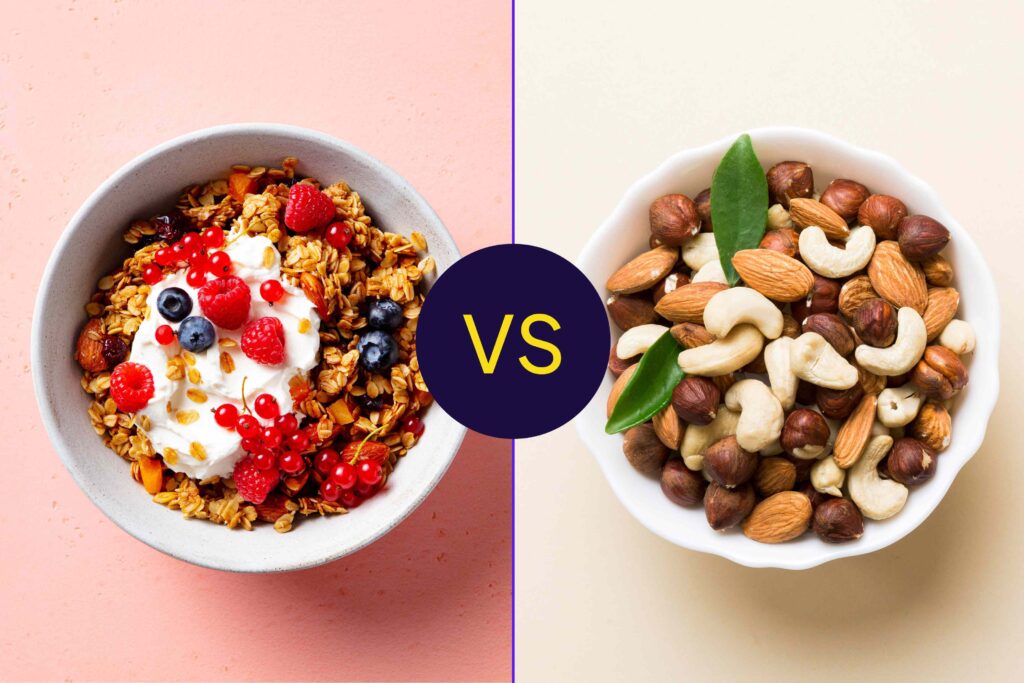If you start your mornings with a bowl of yogurt or chia pudding, you may have wondered which popular crunchy add-in is the healthier choice: nuts or granola. Both offer key nutrients like protein and fiber, but is one better for you?
We asked three registered dietitians to weigh in.
Nutrition experts agree: nuts are the clear winner.
The main reason, said registered dietitian Roberta Anding, MS, RD/LD, CSSD, CDE, is that, unlike some granola varieties, “they are a whole, minimally processed food.”
Many types of granola contain significant amounts of added sugar—in some cases, up to 19 grams (about 5 teaspoons) per serving, according to Anding, who’s also an assistant professor at Baylor College of Medicine. Over time, consuming too much added sugar can raise the risk of diabetes and contribute to heart problems.
Nuts also provide more protein and a higher amount of healthy unsaturated fats—about 17 grams out of the 18 grams total in a quarter cup of mixed nuts. These fats can help lower LDL (“bad”) cholesterol, reduce inflammation, and support nutrient absorption.
That said, granola contains significantly more carbohydrates than nuts—about 20 to 40 grams per serving, compared to 6 grams in a quarter cup of mixed nuts—and more fiber, offering what Morgan Walker, MS, RD, LDN, a sports nutritionist and adjunct professor of exercise science at Lebanon Valley College, calls “added energizers.”
When tossing nuts into your morning breakfast bowl, opt for a mixed variety rather than just a handful of peanuts or cashews, Anding recommends.
Mixed nuts ensure you’re getting a variety of nutrients, since the benefits of each nut vary by type. Walnuts, for example, are known for their plant-based omega-3s, which support heart health, Walker said. Almonds are packed with fiber, she added, while pistachios and pecans are rich in antioxidants that can protect your cells from damage.
One thing to keep in mind: Nuts are calorie-dense, so if that’s a concern for you, check the portion size on the nutrition label when deciding how much to eat.
When choosing granola, look for a brand with less than 5 grams of added sugar per serving—or ideally, no added sugar at all, advises Anding.
Walker suggests finding a granola that lists whole-grain oats as the main ingredient, includes nuts and seeds, and uses unsaturated oils rather than those high in saturated fats.
“Generally, a good rule of thumb is looking for shorter, simpler ingredient lists,” she added.
When it comes to which crunch to add to your morning bowl, experts Health spoke to agreed that nuts are generally the healthier choice. That said, there’s definitely a place for a nutritious granola in your yogurt or chia pudding, according to Jamie Goff, MS, RD, LDN, a registered dietitian at Temple University Hospital—just look for options low in added sugar and saturated fat.


